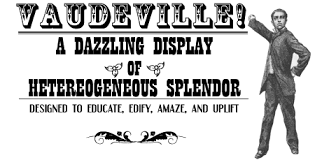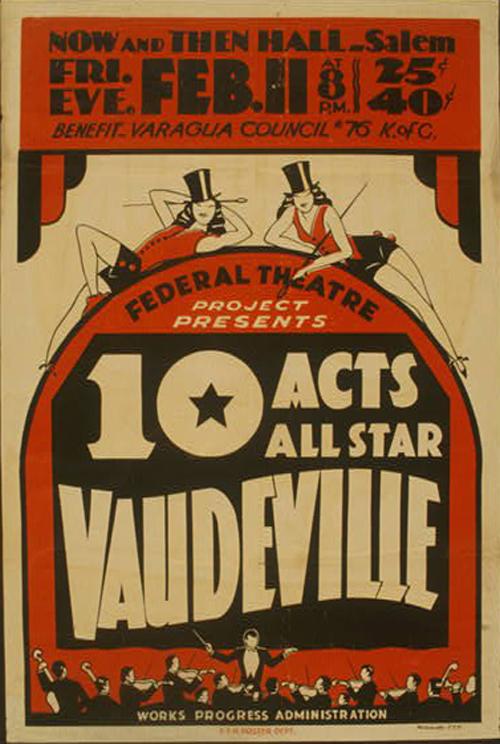Vaudeville is a theatrical genre of variety entertainment. It was especially popular in the United States and Canada from the early 1880s until the early 1930s. A typical vaudeville performance is made up of a series of separate, unrelated acts grouped together on a common bill. Types of acts have included popular and classical musicians, singers, dancers, comedians, trained animals, magicians, female and male impersonators, acrobats, illustrated songs, jugglers, one-act plays or scenes from plays, athletes, lecturing celebrities, minstrels, and movies. A vaudeville performer is often referred to as a “vaudevillian”.
Lured by greater salaries and less arduous working conditions, many performers and personalities, such as Al Jolson, W. C. Fields, Mae West, Buster Keaton, the Marx Brothers, Jimmy Durante, Bill “Bojangles” Robinson, Edgar Bergen, Fanny Brice, Burns and Allen, and Eddie Cantor, used the prominence gained in live variety performance to vault into the new medium of cinema. In so doing, such performers often exhausted in a few moments of screen time the novelty of an act that might have kept them on tour for several years. Other performers who entered in vaudeville’s later years, including Jack Benny, Abbott and Costello, Kate Smith, Cary Grant, Bob Hope, Milton Berle, Judy Garland, Rose Marie, Sammy Davis, Jr., Red Skelton, and The Three Stooges, used vaudeville only as a launching pad for later careers. They left live performance before achieving the national celebrity of earlier vaudeville stars, and found fame in new venues.


